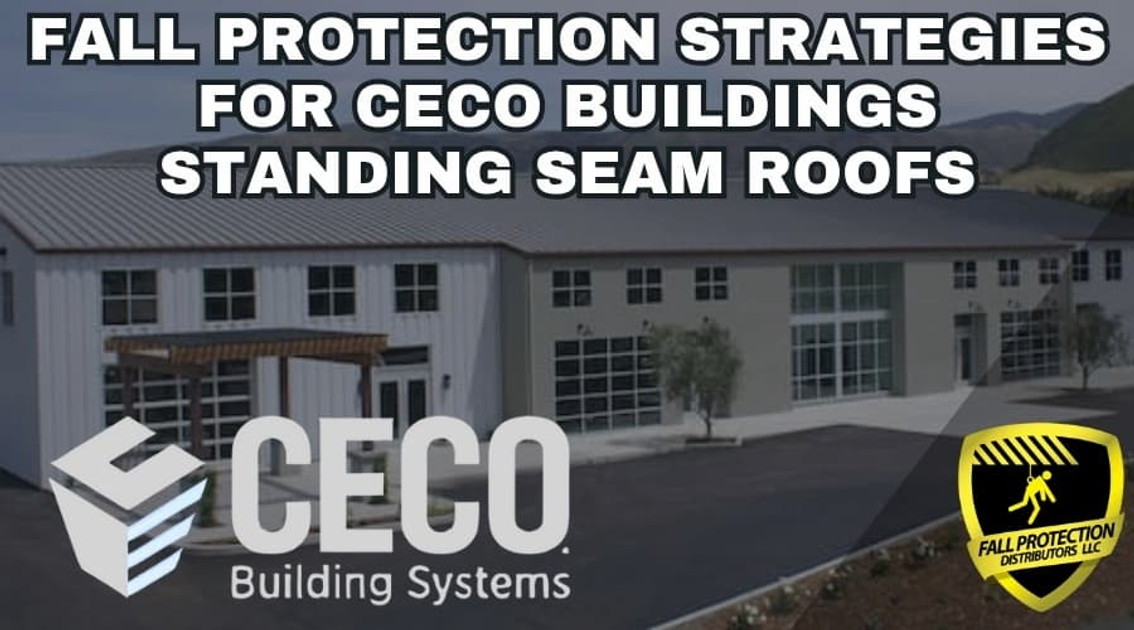Fall Protection Solutions For Ceco Standing Seam Panels
Posted by Howie Scarboro - CEO Fall Protection Distributors, LLC on Oct 24th 2025
See the Roof Anchor Compatibility Chart for Ceco Building Systems Standing Seam Panels.

Who Is Ceco Building Systems?
Ceco Building Systems has shaped the metal building industry for nearly eight decades.
The company began in 1947 when C.L. Mitchell founded Mitchell Engineering in Columbus, Mississippi, with just eleven employees and a small shop dedicated to steel structures. What started as a modest Quonset dealership soon became one of the most trusted names in pre-engineered metal buildings.
Over the years, Ceco introduced innovations that transformed the design, manufacturing, and installation of metal buildings. The company played a significant role in developing standing seam roof systems. It was among the first to incorporate computer-aided design into metal building engineering. These advances set new standards for precision, performance, and efficiency.
Cornerstone Building Brands acquired Ceco in 2006. This partnership expanded Ceco's capabilities while keeping its focus on high-quality craftsmanship and technical excellence. Today, headquartered in Rocky Mount, North Carolina, Ceco designs and fabricates complex metal building systems for commercial, industrial, and institutional projects nationwide.
Ceco built its reputation on durability, visual appeal, and efficiency. Its standing seam roofing systems combine architectural style with lasting strength and superior energy performance. Each system reflects Ceco's commitment to creating buildings that perform under pressure while maintaining a clean, professional appearance.
With a long history of collaboration and innovation, Ceco continues to support builders and architects through every stage of a project. From design and fabrication to field support, the company's team brings experience, technology, and reliability together to deliver lasting results. Ceco's legacy remains rooted in promising to build metal structures that stand firm for generations.
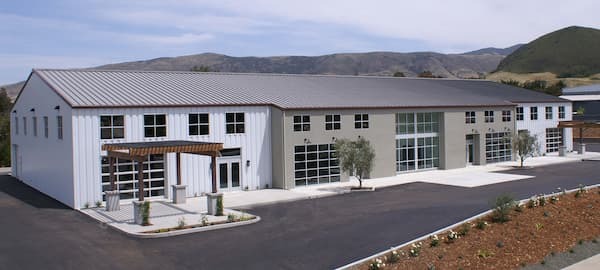
Why Are Non-Penetrating Anchors Critical for Standing Seam Roofs?
Standing seam roofs deliver flexibility, allow for thermal expansion, and maintain watertight performance even under changing weather conditions.
Each panel connects via concealed clips that will enable it to expand and contract as temperatures change. This floating design is what gives the system its longevity. Drilling holes through the panels removes that advantage and compromises the roof's watertight performance.
Over time, corrosion develops beneath the roof, insulation becomes saturated, and leaks appear inside the structure. Even small punctures or screw holes can lead to expensive long-term damage.
Drilling into standing seam panels can also cause visible distortion known as oil canning. When a fastener's pressure bends the metal even slightly, the surface loses its uniform appearance, creating ripples that are difficult to correct. These visual imperfections can diminish the roof's architectural appeal and may affect warranty coverage.
Non-penetrating safety systems preserve the roof's watertight seal and structural performance. By attaching securely to the seams without drilling, they allow the panels to expand and contract while keeping the surface intact. This approach prevents leaks, maintains thermal movement, and protects the long-term value of the roof system.
The following sections will explore Ceco Building Systems' SuperLok®, Double-Lok®, and BattenLok® standing seam panels, along with the most compatible fall protection solutions for each profile.
Double-Lok Metal Roof Panel
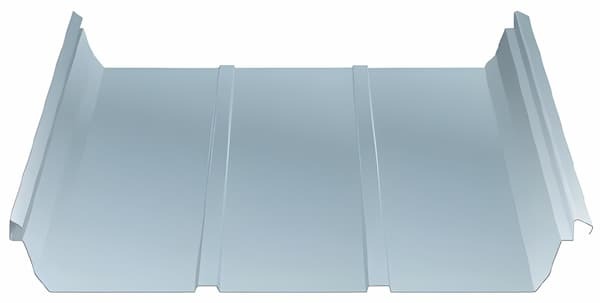
The Double-Lok® metal roof system delivers long-lasting performance and exceptional weather protection for new construction and retrofit projects.
This panel delivers precision engineering and superior strength, making it a top choice for industrial, commercial, and architectural projects that demand watertight performance and consistent appearance. See the Roof Anchor Compatibility Chart for Everlast Roofing 22 Gauge and 24 Gauge Double-Lok Standing Seam Panels.
Each Double-Lok panel features a 16-inch width and a 2-inch seam height, available in 22-gauge or 24-gauge steel. Finish options include Galvalume Plus®, Signature® 200, and Signature® 300, giving builders flexibility to match performance and design requirements. The system uses a concealed fastening method with interlocking clips that attach the panels to sub-framing, eliminating surface penetrations and creating a continuous, weather-resistant envelope.
Double-Lok panels use a mechanically field-seamed trapezoidal leg seam that locks panels together for exceptional wind uplift resistance. Installers can place panels on slopes of ¼:12 or greater, and factory-notching with pre-punched holes streamlines alignment and ensures accurate fastener placement. End laps include a 16-gauge backup plate that reinforces panel connections, further improving weathertightness and structural integrity.
Field installation is efficient because crews can start from either end of the roof or install simultaneously from both sides. Optional tall or short clips are available to accommodate various insulation thicknesses and thermal spacers. This versatility allows the Double-Lok system to meet demanding energy and performance requirements while maintaining its smooth, finished appearance. The panel's UL 90 and FM ratings confirm its reliability under high-wind and severe-weather conditions.
Fall Protection for Double-Lok Metal Roof Panels
Working safely on Double-Lok roofs requires fall protection systems that safeguard workers and the integrity of the panels.
For 22-gauge and 24-gauge steel applications, non-penetrating anchors are the ideal choice because they preserve the watertight seams and prevent structural damage.
The SSRA1 Standing Seam Roof Anchor provides a secure, 5,000-pound-rated tie-off point without drilling into the metal surface. It clamps directly to the Double-Lok seams using non-penetrating set screws that evenly distribute pressure across the seam. This anchor can be installed or removed quickly with a torque wrench, making it reusable and efficient for both contractors and maintenance crews.
When crews need walkboards for steep work areas, they can mount SSRA2 Adjustable Roof Jack Adapters directly on top of the SSRA1 anchors. These adapters support 10-foot-long wooden planks, creating stable, level working platforms. Their adjustable side legs fit the Double-Lok seam profile, giving crews dependable footing during inspections, installations, or repairs.
For larger projects that require maximum worker mobility, SSRA3 Anchor Plates can connect two SSRA1 anchors to create endpoints for temporary lifeline systems. When paired with the Malta Dynamics HLL3001 Horizontal Lifeline, this setup, called the SSRA HLL kit, provides up to 100 feet of temporary tie-off for two workers. It offers complete OSHA and ANSI compliance while enabling safe movement across the entire roof.
For steep roof slopes between 6:12 and 12:12, the Ridge Pro Steep Assist Anchor provides a ridge-mounted tie-off solution that does not attach to the seams. It installs from the ladder using an extension pole. It creates an immediate anchor point before workers step onto the roof. This setup ensures a complete tie-off from the ladder to the ridge and back down again.
Each of these systems provides reliable protection while maintaining the watertight and structural integrity of the Ceco Double-Lok® metal roof system, ensuring safety without compromising quality.
SuperLok Metal Roof Panel
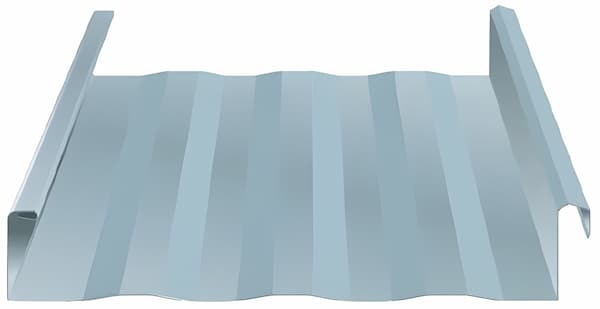
The SuperLok® roof system combines modern strength with refined aesthetics, making it one of the most advanced standing seam profiles in the industry.
Known for its exceptional wind uplift resistance and watertight performance, SuperLok is a trusted choice for commercial, industrial, and architectural applications that demand lasting durability and a clean, professional appearance. See the Roof Anchor Compatibility Chart for Everlast Roofing 22 Gauge and 24 Gauge SuperLok Standing Seam Panels.
SuperLok panels are available in 12-inch and 16-inch widths with a 2-inch-tall vertical rib, providing both dimension and rigidity. Ceco manufactures panels in 22-, 24-, and 26-gauge steel, offering finish options that include Galvalume Plus®, Signature® 200, and Signature® 300. Installers can use SuperLok over open framing, purlins, bar joists, or solid decking, providing flexibility for a wide range of construction types.
This field-seamed system includes a factory-applied sealant that enhances watertightness while reducing installation labor time. The concealed fastening clips allow for up to two inches of thermal movement, ensuring the panels can expand and contract naturally with temperature changes. Each panel comes factory-notched with pre-punched holes for accurate alignment and consistent end laps.
SuperLok panels meet stringent code requirements, hold Factory Mutual and ICBO approvals, and are UL 90-rated for wind uplift. Installers can start from either end of the building, and the dual-direction seaming feature speeds up installation on large-scale projects. The panel's clean lines, lack of exposed fasteners, and available limited weathertightness warranty make it a reliable long-term solution for demanding environments.
Fall Protection for SuperLok Metal Roof Panels
Safety on SuperLok roofs requires equipment that maintains the roof's watertight integrity while fully protecting workers.
For 22-gauge and 24-gauge steel panels, the SSRA1 Standing Seam Roof Anchor provides a 5,000-pound-rated tie-off point without drilling into the metal surface. It clamps directly to the seams using stainless steel set screws that apply even pressure, ensuring a strong, non-penetrating connection that preserves the roof's finish.
When steeper slopes require walkboards, crews can mount SSRA2 Adjustable Roof Jack Adapters directly on top of the SSRA1 anchors. These adapters hold 10-foot wooden walkboards, creating level platforms that give crews steady footing. Adjustable side legs allow the system to fit the SuperLok seam height precisely, adding flexibility to each job.
For projects that require horizontal movement across longer spans, SSRA3 Anchor Plates can link two SSRA1 anchors to serve as connection points for temporary lifelines. When paired with the Malta Dynamics HLL3001 Horizontal Lifeline System, the SSRA HLL kit provides 100 feet of continuous tie-off for two workers. It provides a safe, efficient solution for large roofs that require unrestricted mobility.
For permanent access or maintenance applications, the Super Anchor 120-foot Permanent Standing Seam Horizontal Lifeline Kit provides a long-term, fixed tie-off option. It installs along roof seams using non-penetrating clamps, providing maintenance teams immediate access while maintaining the roof's structural integrity.
Because 26-gauge SuperLok panels use thinner steel, crews should avoid installing seam-mounted anchors to prevent damage or deformation. For roofs with slopes between 6:12 and 12:12, the Ridge Pro Steep Assist Anchor offers the safest alternative. It installs from the ladder using a 16-foot extension pole, hooking securely over the ridge to create a tie-off point before workers step onto the surface. This approach ensures a complete tie-off from the ladder to the ridge and back down again, while protecting the roof's warranty and watertight design.
By pairing Ceco's SuperLok® panels with compatible non-penetrating fall protection systems, contractors can maintain complete OSHA and ANSI compliance while preserving the clean architectural finish that makes this panel a flagship of the Ceco lineup.
BattenLok® HS Metal Roof Panel
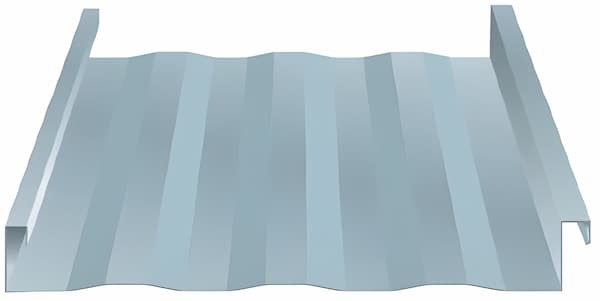
BattenLok HS offers the strength and versatility of a standing seam system with the refined appearance architects demand.
This structural panel spans up to five feet on purlins or installs easily as an architectural option over a solid deck. Each panel features a two-inch vertical seam and can reach lengths up to 55 feet, giving builders flexibility for both large and small projects.See the Roof Anchor Compatibility Chart for Everlast Roofing 22 Gauge and 24 Gauge BattenLok HS Standing Seam Panels.
Available in 12-, 16-, and custom widths, BattenLok HS panels can be 22- or 24-gauge steel and finished in Galvalume Plus®, Signature® 200, or Signature® 300 coatings. The concealed fastening system uses either fixed or floating clips, which allow for natural thermal expansion and contraction. Floating clips improve watertight performance and maintain smooth panel lines across wide spans.
These panels are tested under ASTM E283 and E331 for air and water penetration, confirming their superior weather resistance. Each panel includes a factory-applied mastic inside the female leg for a secure, watertight fit. Optional striations and embossing help minimize oil canning while enhancing appearance. With Energy Star® paint options and a 25-year finish warranty, BattenLok HS panels provide long-lasting protection and energy efficiency for industrial, commercial, and architectural projects.
Fall Protection for BattenLok® HS Roofs
For 22- and 24-gauge BattenLok HS panels, non-penetrating anchors provide the safest and most reliable solution for maintaining the roof's watertight integrity.
The SSRA1 Standing Seam Roof Anchor attaches directly to the seams with twelve non-penetrating set screws, creating a 5,000-pound tie-off point without drilling or deforming the panel. This simple, reusable anchor meets OSHA and ANSI standards and keeps the system fully intact.
When workers need walkboards for steep roof areas, the SSRA2 Adjustable Roof Jack Adapters mount atop the SSRA1 anchors to support 10-foot wooden walkboards. Adjustable side legs allow the adapters to fit the BattenLok HS seam profile, providing a stable, level platform that enhances safety and comfort during installation or maintenance.
For large-scale projects, SSRA3 Anchor Plates connect two SSRA1 anchors and serve as end points for horizontal lifelines. Crews can use the SSRA HLL 100-foot Temporary Horizontal Lifeline Kit for continuous tie-off coverage across long spans. This system protects up to 2 workers and allows free movement across the roof without compromising safety or damaging the panels.
When long-term protection is required, the Super Anchor 120-foot Permanent Standing Seam Horizontal Lifeline Kit creates fixed tie-off points along the seams. It offers a permanent, non-penetrating solution that allows inspectors and service teams to clip in immediately while preserving the roof's warranty and appearance.
For steep roof slopes between 6:12 and 12:12, the Ridge Pro Steep Assist Anchor offers a secure, ridge-mounted option. It installs from the ladder using a sixteen-foot extension pole and hooks over the roof ridge before anyone steps onto the surface. This setup keeps workers tied off from ladder to ridge and back again, ensuring total safety and compliance while maintaining the BattenLok HS panel's watertight design.
By pairing BattenLok HS panels with compatible, non-penetrating fall protection systems such as the SSRA1, SSRA2, SSRA3, SSRA HLL 100-foot Temporary Kit, Super Anchor 120-foot Permanent Kit, and Ridge Pro Steep Assist Anchor, contractors can protect the workers and the roof on every job.
Ultra-Dek Snaplock Metal Roof Panel
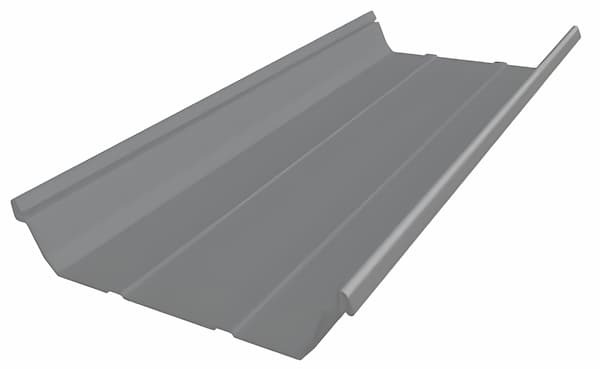
The Ultra-Dek® roof system delivers performance and simplicity through its snap-together trapezoidal seam design.
This standing seam profile installs quickly without mechanical seaming, making it an efficient choice for large commercial, industrial, and architectural projects. See the Roof Anchor Compatibility Chart for Everlast Roofing 22 Gauge and 24 Gauge Ultra-Dek Standing Seam Panels.
Ultra-Dek panels are available in 18-inch and 24-inch widths, with a minimum roof slope of ¼:12. They are available in 22-, 24-, and 26-gauge steel, with finish choices including Galvalume Plus®, Signature® 200, and Signature® 300. The system uses high, low, fixed, or sliding clips to accommodate thermal movement and ensure long-term weathertightness.
Each panel arrives factory-notched with pre-punched holes for precise alignment, and a factory-applied sealant in the side laps ensures a tight, watertight fit. End laps feature a 16-gauge backup plate with pre-punched holes, improving installation speed and uniformity. With UL 90 and FM ratings, the Ultra-Dek system offers strong resistance to wind uplift. It qualifies for reduced insurance costs in many regions.
This system installs quickly without the need for seaming tools. It can begin from either end of the roof, giving crews more flexibility. The smooth, clean appearance of the finished roof complements modern architectural designs while maintaining industry-leading weather protection.
Fall Protection for Ultra-Dek Metal Roof Panels
Non-penetrating anchors are essential when working on Ultra-Dek systems to prevent leaks and preserve the roof's watertight seal.
For 22- and 24-gauge steel panels, the SSRA1 Standing Seam Roof Anchor offers a secure, non-destructive tie-off rated for 5,000 pounds. It clamps directly to the seams with stainless steel set screws, eliminating the need for drilling or fasteners that could damage the panels.
Crews needing access for installation or inspection can pair the SSRA1 with SSRA2 Adjustable Roof Jack Adapters. These adapters hold 10-foot wooden walkboards, allowing workers to move safely and steadily along the roofline without compromising the roof's integrity.
When multiple workers require maximum mobility, SSRA3 Anchor Plates can connect two SSRA1 anchors to form a base for temporary horizontal lifelines. Combined with the Malta Dynamics HLL3001 Horizontal Lifeline System, the SSRA HLL kit provides 100 feet of continuous tie-off for up to 2 users, enabling mobility across long roof sections.
For 26-gauge Ultra-Dek panels, crews should avoid using seam-mounted anchors because the thinner panel material lacks sufficient strength to absorb impact loads from falls. On roofs with slopes from 6:12 to 12:12, the Ridge Pro Steep Assist Anchor is the best option. It hooks over the ridge and installs from the ladder using a 16-foot pole, giving workers a safe tie-off point before setting foot on the metal surface. This method ensures complete safety while maintaining the smooth, watertight profile that defines the Ultra-Dek system.
By combining Ultra-Dek® panels with properly matched non-penetrating safety systems, contractors can ensure OSHA and ANSI compliance while preserving the longevity, appearance, and warranty of these advanced standing seam roof systems.
Standing Seam Roof Anchor Compatibility For Ceco Building Systems
| Double-Lok 22 Ga. | Double-Lok 24 Ga. | SuperLok 22 Ga. | SuperLok 24 Ga. | BattenLok HS 24 Ga. | BattenLok HS 22 Ga. | Ultra-Dek Snaplock 22 Ga. | Ultra-Dek Snaplock 24 Ga. | |
|---|---|---|---|---|---|---|---|---|
SSRA 1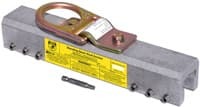 |
YES | NO | YES | NO | YES | NO | YES | NO |
SSRA1 Nylon Tip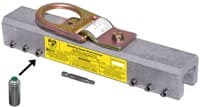 |
YES | YES | YES | YES | YES | YES | YES | YES |
SSRA2 Roof Jack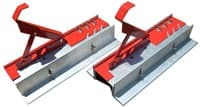 |
YES | YES | YES | YES | YES | YES | YES | YES |
SSRA3 Anchor Plate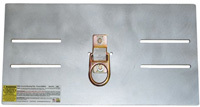 |
YES | YES | YES | YES | YES | YES | YES | YES |
The Ridge Pro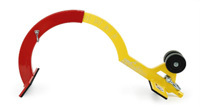 |
YES | YES | YES | YES | YES | YES | YES | YES |
Contact Us For More Information
For further details on roofing solutions and fall protection systems, contact us at 863-703-4522 or www.StandingSeamRoofAnchor.com. Let's work together to make your roofing projects safe, beautiful, and built to last. For more safety tips, refer to OSHA's 48-page Fall Protection Manual. Once you have determined the most suitable anchors for your roof system, download our free Anchor Inspection Form.
Safety Tips For Standing Seam Roofs
Promote a Culture of Safety
Safety doesn't begin with a checklist; it starts with communication. Crews that talk openly about hazards, share lessons from close calls, and look out for each other create safer, more efficient job sites. Make short safety talks part of the daily routine so awareness becomes a habit rather than a reminder. When the crew buys into the process, safety becomes the culture, not just the rulebook.
Use Specialized Anchor Systems for Standing Seam Roofs
Standing seam panels require non-penetrating anchors that protect their watertight, floating-seam structure. Non-penetrating systems create secure tie-off points without drilling or damaging the seams. This approach protects the roof warranty, maintains watertight performance, and delivers fall arrest protection that meets OSHA and ANSI standards. Safety managers should avoid seam anchors that require placement above roof clips, as they are impossible to locate on existing roof systems.
Equip Workers with High Quality Safety Gear
The best safety programs start with dependable gear. Harnesses that fit correctly, lifelines that function smoothly, and connectors that lock firmly give workers the confidence to stay safe and productive. Under OSHA's updated 2025 rules, every piece of PPE must be sized appropriately to each individual.
Install Permanent Roof Anchor Systems
For buildings that see frequent roof traffic, permanent anchors are an investment in safety and efficiency. Once installed, they provide immediate tie-off points for service crews, inspectors, and maintenance teams. With permanent anchors, there's no setup delay or guesswork about where to clip in.
Ensure Proper Footwear for Stability
Balance is everything on a roof. Quality roofing boots with solid tread and ankle support give workers the traction they need on slick or uneven surfaces. Good footwear reduces fatigue, prevents twisted ankles, and helps maintain stability while moving materials or tools. The proper boots often stop accidents before they ever have a chance to start.
Develop OSHA Compliant Safety Plans
Preparation saves lives. A detailed safety plan identifies tie-off points, outlines rescue procedures, and clarifies who is responsible for what in an emergency. Crews that know the plan respond faster and stay calmer under pressure. By putting the plan in writing and reviewing it regularly, you turn compliance into confidence and remove the guesswork from safety.
Encourage the Use of Trauma Straps
Stopping the fall is only half the job—protecting the worker after the arrest is just as important. Trauma straps allow someone suspended in a harness to shift their weight and keep blood flowing until help arrives. They take seconds to deploy and can mean the difference between a rescue and a medical emergency. Every harness should have them ready.
Consult Experts for Curved Metal Panels
Curved standing seam roofs bring beauty and complex roof designs to the industry. However, the complicated seam shapes can cause problems for seam-mounted equipment. Before any work begins, have a fall protection specialist evaluate the roof's design and recommend appropriate equipment. A professional assessment prevents costly damage and ensures safety on these intricate surfaces.
Prioritize Ladder Safety Training
Most accidents occur before anyone even steps on the roof. Always inspect ladders for cracks or bends, position them at the proper four-to-one angle, and secure them on level ground. Maintaining three points of contact and keeping hands free of tools during climbs should be non-negotiable. Regular training keeps these habits sharp and prevents the most common type of roofing injury.
Set Up Protective Guardrail Barriers for Work Zones
Guardrails quietly protect the crew around skylights, roof edges, and staging zones. They create a visual and physical reminder of danger areas. These barriers keep movement controlled and reduce fall risk without interrupting workflow, allowing workers to focus on the task rather than the edge.
Disclaimer
The views, recommendations, and information presented in this blog are solely those of the author and do not necessarily reflect the opinions or positions of the featured panel manufacturer, its brands, subsidiaries, or parent companies. Customers are strongly encouraged to contact the roof panel manufacturer directly for inquiries regarding fall protection compatibility with their products and to address any potential warranty issues that may arise after installing our products.

